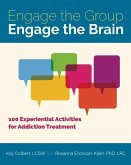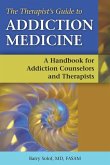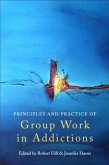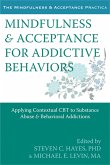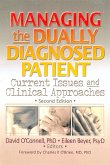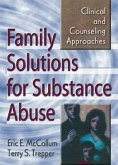Claudia Black, Cara Tripodi
Intimate Treason
Healing the Trauma for Partners Confronting Sex Addiction
Schade – dieser Artikel ist leider ausverkauft. Sobald wir wissen, ob und wann der Artikel wieder verfügbar ist, informieren wir Sie an dieser Stelle.
Claudia Black, Cara Tripodi
Intimate Treason
Healing the Trauma for Partners Confronting Sex Addiction
- Broschiertes Buch
- Merkliste
- Auf die Merkliste
- Bewerten Bewerten
- Teilen
- Produkt teilen
- Produkterinnerung
- Produkterinnerung
Partners affected by sex addiction learn to develop healthy boundaries and make positive changes for themselves and their partners.
Andere Kunden interessierten sich auch für
![Engage the Group, Engage the Brain Engage the Group, Engage the Brain]() Kay ColbertEngage the Group, Engage the Brain21,99 €
Kay ColbertEngage the Group, Engage the Brain21,99 €![The Therapist's Guide to Addiction Medicine The Therapist's Guide to Addiction Medicine]() Barry SolofThe Therapist's Guide to Addiction Medicine18,99 €
Barry SolofThe Therapist's Guide to Addiction Medicine18,99 €![Principles and Practice of Group Work in Addictions Principles and Practice of Group Work in Addictions]() Principles and Practice of Group Work in Addictions68,99 €
Principles and Practice of Group Work in Addictions68,99 €![Mindfulness & Acceptance for Addictive Behaviors Mindfulness & Acceptance for Addictive Behaviors]() Mindfulness & Acceptance for Addictive Behaviors61,99 €
Mindfulness & Acceptance for Addictive Behaviors61,99 €![Managing the Dually Diagnosed Patient Managing the Dually Diagnosed Patient]() David F O'ConnellManaging the Dually Diagnosed Patient37,99 €
David F O'ConnellManaging the Dually Diagnosed Patient37,99 €![Family Solutions for Substance Abuse Family Solutions for Substance Abuse]() Eric E. MccollumFamily Solutions for Substance Abuse59,99 €
Eric E. MccollumFamily Solutions for Substance Abuse59,99 €![Changing Self-Destructive Habits Changing Self-Destructive Habits]() Matthew D. SelekmanChanging Self-Destructive Habits51,99 €
Matthew D. SelekmanChanging Self-Destructive Habits51,99 €-
-
Partners affected by sex addiction learn to develop healthy boundaries and make positive changes for themselves and their partners.
Produktdetails
- Produktdetails
- Verlag: Central Recovery Press
- Seitenzahl: 200
- Erscheinungstermin: 11. September 2012
- Englisch
- Abmessung: 251mm x 201mm x 18mm
- Gewicht: 544g
- ISBN-13: 9781936290932
- ISBN-10: 1936290936
- Artikelnr.: 35362501
- Herstellerkennzeichnung
- Libri GmbH
- Europaallee 1
- 36244 Bad Hersfeld
- gpsr@libri.de
- Verlag: Central Recovery Press
- Seitenzahl: 200
- Erscheinungstermin: 11. September 2012
- Englisch
- Abmessung: 251mm x 201mm x 18mm
- Gewicht: 544g
- ISBN-13: 9781936290932
- ISBN-10: 1936290936
- Artikelnr.: 35362501
- Herstellerkennzeichnung
- Libri GmbH
- Europaallee 1
- 36244 Bad Hersfeld
- gpsr@libri.de
Claudia Black: Claudia Black, PhD is a renowned addictions and codependency expert, author, and trainer internationally recognized for her pioneering and contemporary work with family systems and addictive disorders. Since the 1970s, Dr. Black's work has encompassed the impact of addiction on young and adult children. She has offered models of intervention and treatment related to family violence, addiction, relapse, anger, depression, and women's issues. Dr. Black designs and presents training workshops and seminars to professional audiences in the field of family service, mental health, addiction, and correctional services. She serves on the Advisory Board for the National Association of Children of Alcoholics, and the Advisory Council of the Moyer Foundation. Dr. Black is the author of It Will Never Happen to Me; Changing Course; My Dad Loves Me, My Dad Has A Disease; Repeat After Me; It's Never Too Late to Have a Happy Childhood, Relapse Toolkit; A Hole in the Sidewalk; Depression Strategies; Straight Talk; The Stamp Game; Family Strategies; Anger Strategies; and Deceived: Facing Sexual Betrayal, Lies, and Secrets. She has produced seven audio CDs addressing issues of addiction and recovery. They are A Time for Healing, Putting the Past Behind, Triggers, Emotional Baggage, Trauma in the Addicted Family, Imageries, and Letting Go Imageries. And, she has over 20 DVDs for professionals to use working with families and clients. The Wisdom of Hope is her first title for Central Recovery Press. Dr. Black is the Senior Clinical and Family Services Advisor for Central Recovery Treatment and Senior Editorial Advisor for Central Recovery Press. Cara Tripodi: Cara Tripodi, LCSW, CSAT-S, received her MSS from the Bryn Mawr School of Social Work and Social Research in 1991. She is a licensed social worker in the state of Pennsylvania, and since 2001 has been the Executive Director and owner of an outpatient treatment center specializing in sex addiction-STAR-Sexual Trauma and Recovery, Inc. in Wynnewood, PA. She has also been a workshop leader at the Pine Grove Behavioral Health program in Hattiesburg, MS. Pine Grove was founded by Patrick Carnes, and is one of the most renowned sex addiction treatment programs in the US.
Introduction
Chapter I: Claiming Your Reality
1. Telling your Story
2. My Suspicions Realized
3. The Word
4. The Ripple Effect
5. Managing Triggers
6. Bottom Line: Non Negotiable Boundaries
7. Deciding Whom To Tell
8. Seeking Help Through Connections
Chapter II: Turning inward
1. Vision for Self
2. Living in Limbo
3. Defining Trauma Responses
4. Grief with Partners
5. My Losses
6. Letters to My Self
7. Feelings
8. Emotions The Body
9. Personal Strengths
Chapter III: My Part of the Dance
A. Emotional Problems
1. Emotional Regulation
2. Stepping out of Reaction Into Action
3. Unraveling the Myths of Control
4. My Relationship to Anger
5. The Myth of Perfectionism
B. Perception Problems
1. Coping or Defending: The Paradox of Denying Reality
2. Remove the Veil
3. Protecting the Illusion
4. Cloudy to Clear: Transforming Distorted Thinking
5. Magical Thinking: Challenging the Fantasy
6. Stepping Out of The Victim
7. Tolerating the Unacceptable
C. Behavioral Problems
1. My Risky Behaviors
2. Relationship & Love Addiction
3. Co-Morbidity
Chapter IV: Recognizing Childhood Influences
1. Family of Origin Influences
2. Abandonment Repeated
3. Trauma Repetition
4. Family Tree
5. Family of Origin Feelings
6. Family of Origin Needs
7. Trust: Trusting Own Perception
8. Family of Origin Boundaries
9. Willingness to Explore More
Chapter V: Taking Charge of Your Own Life
1. Disclosure
2. Boundaries
3. Decision to Stay or Leave
4. Communication
5. Arrested Grief
6. Integrating Sexuality Back into the Relationship: Healthy Sexuality
7. Children
8. Healthy Intimacy Begins to be Explored
Chapter VI: Moving Forward
1. Forgiveness pieces
2. Spirituality
3. Recovery plans
4. Living Day-to-Day: Goals for Myself: Self-care Daily Sheet
Chapter I: Claiming Your Reality
1. Telling your Story
2. My Suspicions Realized
3. The Word
4. The Ripple Effect
5. Managing Triggers
6. Bottom Line: Non Negotiable Boundaries
7. Deciding Whom To Tell
8. Seeking Help Through Connections
Chapter II: Turning inward
1. Vision for Self
2. Living in Limbo
3. Defining Trauma Responses
4. Grief with Partners
5. My Losses
6. Letters to My Self
7. Feelings
8. Emotions The Body
9. Personal Strengths
Chapter III: My Part of the Dance
A. Emotional Problems
1. Emotional Regulation
2. Stepping out of Reaction Into Action
3. Unraveling the Myths of Control
4. My Relationship to Anger
5. The Myth of Perfectionism
B. Perception Problems
1. Coping or Defending: The Paradox of Denying Reality
2. Remove the Veil
3. Protecting the Illusion
4. Cloudy to Clear: Transforming Distorted Thinking
5. Magical Thinking: Challenging the Fantasy
6. Stepping Out of The Victim
7. Tolerating the Unacceptable
C. Behavioral Problems
1. My Risky Behaviors
2. Relationship & Love Addiction
3. Co-Morbidity
Chapter IV: Recognizing Childhood Influences
1. Family of Origin Influences
2. Abandonment Repeated
3. Trauma Repetition
4. Family Tree
5. Family of Origin Feelings
6. Family of Origin Needs
7. Trust: Trusting Own Perception
8. Family of Origin Boundaries
9. Willingness to Explore More
Chapter V: Taking Charge of Your Own Life
1. Disclosure
2. Boundaries
3. Decision to Stay or Leave
4. Communication
5. Arrested Grief
6. Integrating Sexuality Back into the Relationship: Healthy Sexuality
7. Children
8. Healthy Intimacy Begins to be Explored
Chapter VI: Moving Forward
1. Forgiveness pieces
2. Spirituality
3. Recovery plans
4. Living Day-to-Day: Goals for Myself: Self-care Daily Sheet
Introduction
Chapter I: Claiming Your Reality
1. Telling your Story
2. My Suspicions Realized
3. The Word
4. The Ripple Effect
5. Managing Triggers
6. Bottom Line: Non Negotiable Boundaries
7. Deciding Whom To Tell
8. Seeking Help Through Connections
Chapter II: Turning inward
1. Vision for Self
2. Living in Limbo
3. Defining Trauma Responses
4. Grief with Partners
5. My Losses
6. Letters to My Self
7. Feelings
8. Emotions The Body
9. Personal Strengths
Chapter III: My Part of the Dance
A. Emotional Problems
1. Emotional Regulation
2. Stepping out of Reaction Into Action
3. Unraveling the Myths of Control
4. My Relationship to Anger
5. The Myth of Perfectionism
B. Perception Problems
1. Coping or Defending: The Paradox of Denying Reality
2. Remove the Veil
3. Protecting the Illusion
4. Cloudy to Clear: Transforming Distorted Thinking
5. Magical Thinking: Challenging the Fantasy
6. Stepping Out of The Victim
7. Tolerating the Unacceptable
C. Behavioral Problems
1. My Risky Behaviors
2. Relationship & Love Addiction
3. Co-Morbidity
Chapter IV: Recognizing Childhood Influences
1. Family of Origin Influences
2. Abandonment Repeated
3. Trauma Repetition
4. Family Tree
5. Family of Origin Feelings
6. Family of Origin Needs
7. Trust: Trusting Own Perception
8. Family of Origin Boundaries
9. Willingness to Explore More
Chapter V: Taking Charge of Your Own Life
1. Disclosure
2. Boundaries
3. Decision to Stay or Leave
4. Communication
5. Arrested Grief
6. Integrating Sexuality Back into the Relationship: Healthy Sexuality
7. Children
8. Healthy Intimacy Begins to be Explored
Chapter VI: Moving Forward
1. Forgiveness pieces
2. Spirituality
3. Recovery plans
4. Living Day-to-Day: Goals for Myself: Self-care Daily Sheet
Chapter I: Claiming Your Reality
1. Telling your Story
2. My Suspicions Realized
3. The Word
4. The Ripple Effect
5. Managing Triggers
6. Bottom Line: Non Negotiable Boundaries
7. Deciding Whom To Tell
8. Seeking Help Through Connections
Chapter II: Turning inward
1. Vision for Self
2. Living in Limbo
3. Defining Trauma Responses
4. Grief with Partners
5. My Losses
6. Letters to My Self
7. Feelings
8. Emotions The Body
9. Personal Strengths
Chapter III: My Part of the Dance
A. Emotional Problems
1. Emotional Regulation
2. Stepping out of Reaction Into Action
3. Unraveling the Myths of Control
4. My Relationship to Anger
5. The Myth of Perfectionism
B. Perception Problems
1. Coping or Defending: The Paradox of Denying Reality
2. Remove the Veil
3. Protecting the Illusion
4. Cloudy to Clear: Transforming Distorted Thinking
5. Magical Thinking: Challenging the Fantasy
6. Stepping Out of The Victim
7. Tolerating the Unacceptable
C. Behavioral Problems
1. My Risky Behaviors
2. Relationship & Love Addiction
3. Co-Morbidity
Chapter IV: Recognizing Childhood Influences
1. Family of Origin Influences
2. Abandonment Repeated
3. Trauma Repetition
4. Family Tree
5. Family of Origin Feelings
6. Family of Origin Needs
7. Trust: Trusting Own Perception
8. Family of Origin Boundaries
9. Willingness to Explore More
Chapter V: Taking Charge of Your Own Life
1. Disclosure
2. Boundaries
3. Decision to Stay or Leave
4. Communication
5. Arrested Grief
6. Integrating Sexuality Back into the Relationship: Healthy Sexuality
7. Children
8. Healthy Intimacy Begins to be Explored
Chapter VI: Moving Forward
1. Forgiveness pieces
2. Spirituality
3. Recovery plans
4. Living Day-to-Day: Goals for Myself: Self-care Daily Sheet


